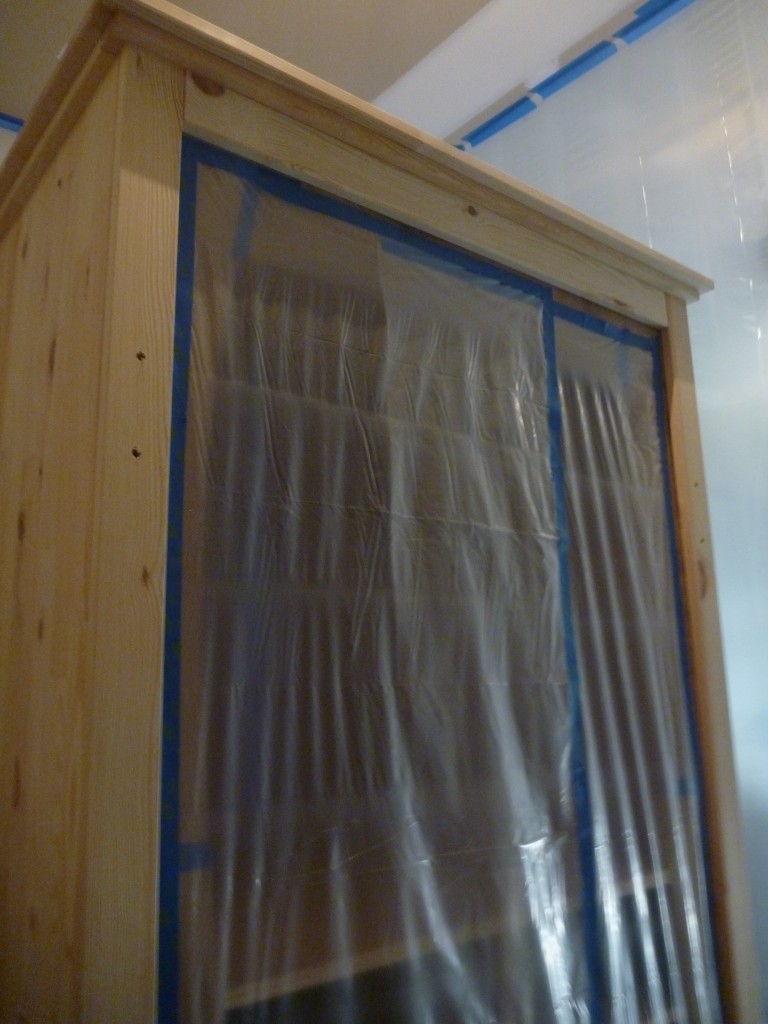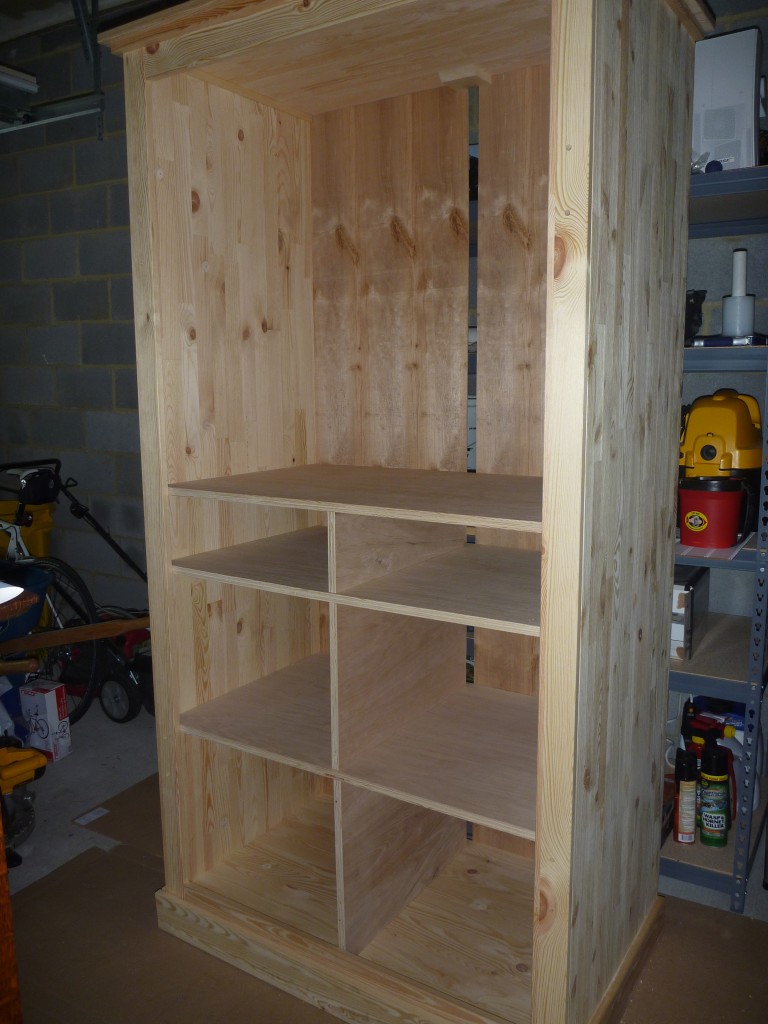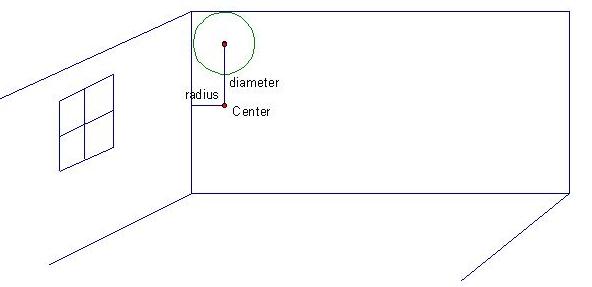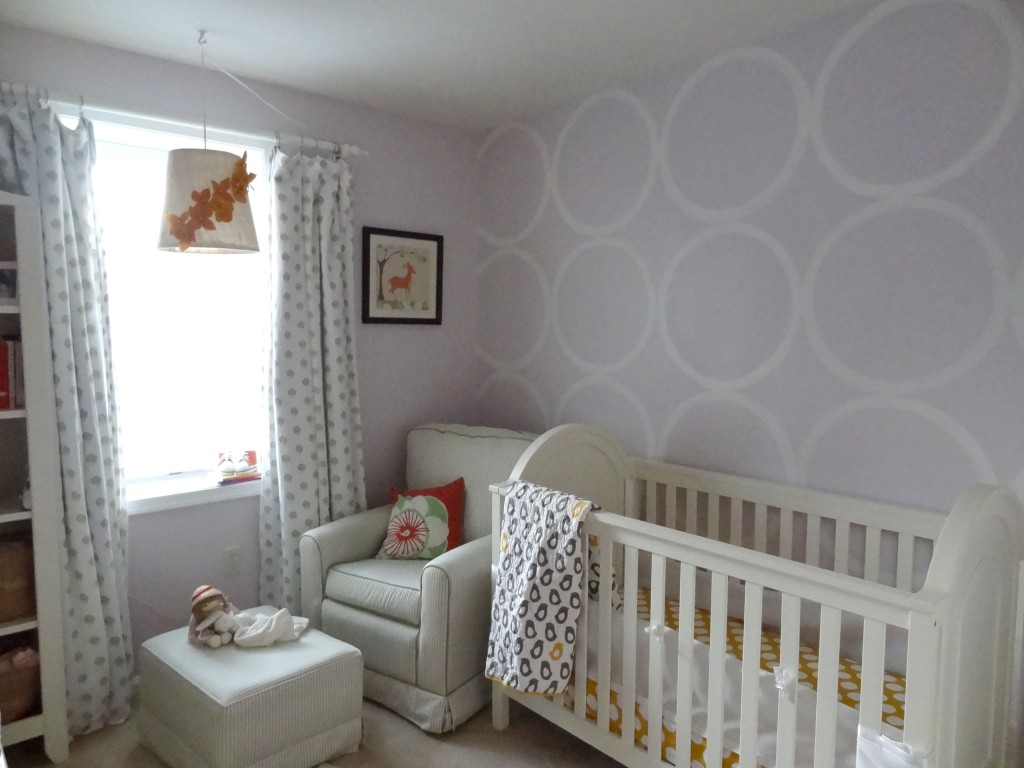Awhile ago I shared with you how we took an IKEA clothing armoire and added shelving to customize it to our storage needs.
We last left off with our armoire ready to be primed and painted. As this is a large piece of furniture, we used a paint sprayer for the very first time. Before we started, we had to construct a painting lair in our garage. We taped plastic drop cloths from the ceiling to the ground, making as big a square as our garage space would allow. We used the massive cardboard box that the armoire came in as temporary flooring and hoisted the armoire up onto a dolly so it could be spun around. While we did a great job with the plastic spraying den, I can’t help but think it belongs in some horror related movie or TV Show…
We also chose to tape up the front of the armoire/space on the back because we wanted the inside to be kept the pine color. We liked the natural look for the inside, and boy does it smell like Christmas in there.
With our prep work done, it was time to spray. For the first time, my husband became the painter in our house (I love to paint, so walls, furniture, cabinets, etc. have all been on me up to this point). Plus, the oil based primer that he chose was a no-no for me to be around. I think he looks pretty snazzy in his painting outfit—safety and cleanliness first people!
We chose to prime the armoire with Sherwin Williams Fast Drying Interior/Exterior Oil Based Primer. As the piece is pine, we didn’t want the knots leaching through the paint color, so 2 coats of primer were applied. It only took my husband about 10 minutes to spray each coat of primer, with 35 minutes of dry time in between. Needless to say, he’s a big fan of the expediency of a paint sprayer.
After the primer was dry, it was time to apply the top coat. This piece is going on the first floor of our house, which has a palette of creams, blues, and greens. We could have played it safe and gone with a creamy color, but we decided to be bold for once and go with blue. We chose Sherwin Williams Moody Blue.
After spraying 2 coats of paint, it was time to hang the freshly primed/painted doors.
Before attaching the doors, we constructed a spot to hang ribbon. We used two pieces of square shaped pine boards, some wood dowels that we cut to the width that we wanted, and curtain hooks for this.
After deciding how many ‘rows’ of ribbon holders we wanted per door and doing some quick math to make sure the layout was even, we were set to begin.
We used screws to secure the 2 pine pieces to the insides of the armoire doors. We then marked where our hooks would go and affixed those as well using smaller screws.
This was super easy and a good use of that blank door space!
Here it is, my new craft space, all tucked away neatly out of sight:
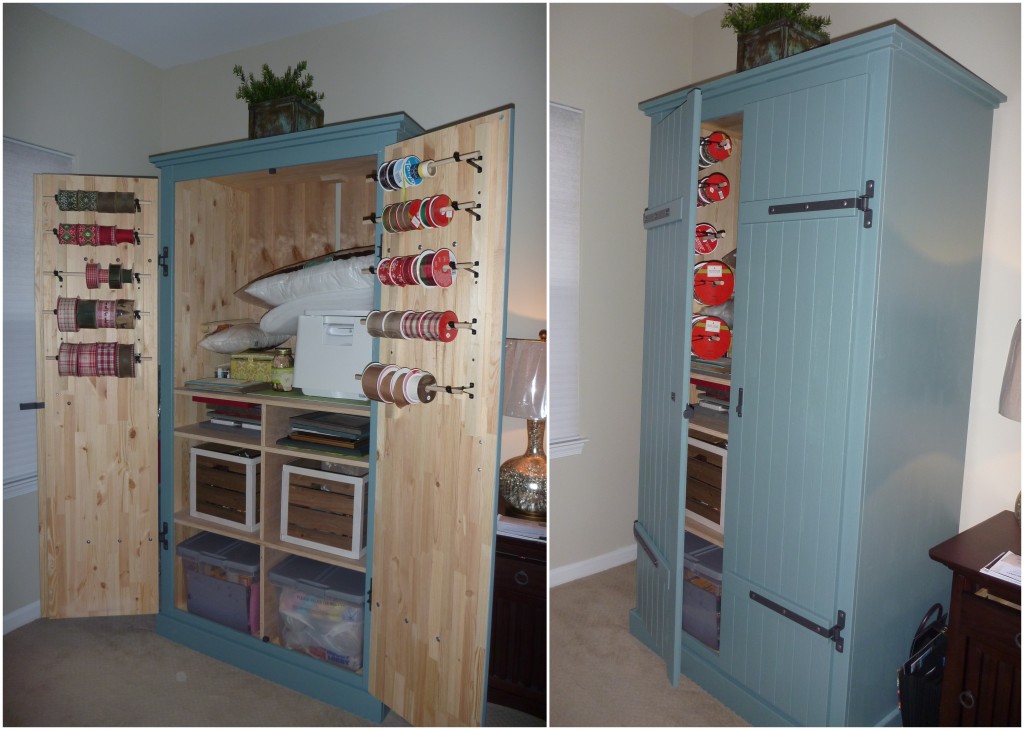
 I’m sure I’ll think of other ways to customize the other nooks and crannies of the armoire, but for now I’m happy that all craft supplies are corralled in one place.
I’m sure I’ll think of other ways to customize the other nooks and crannies of the armoire, but for now I’m happy that all craft supplies are corralled in one place.
I’d love to know how you store your crafting gear!

